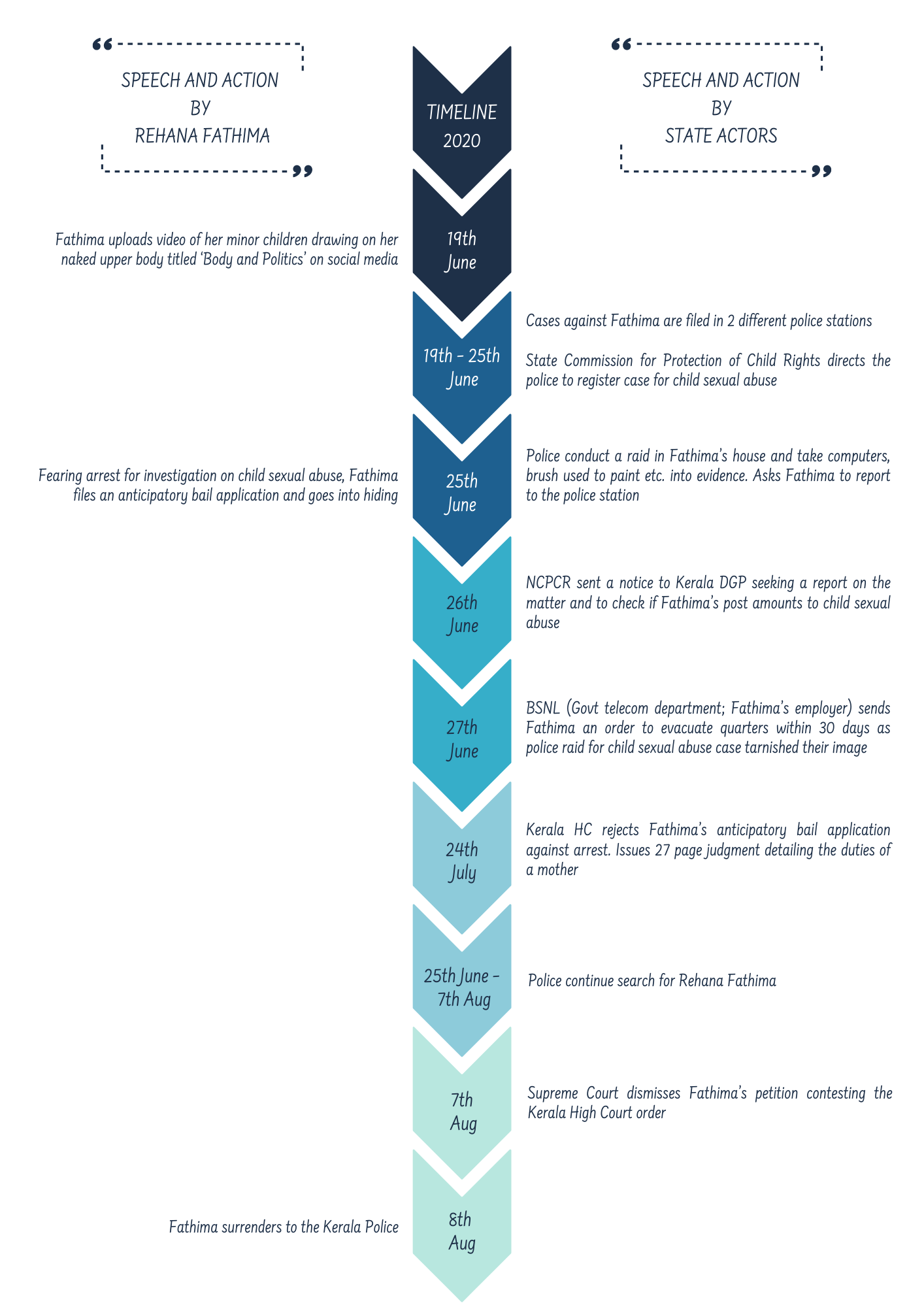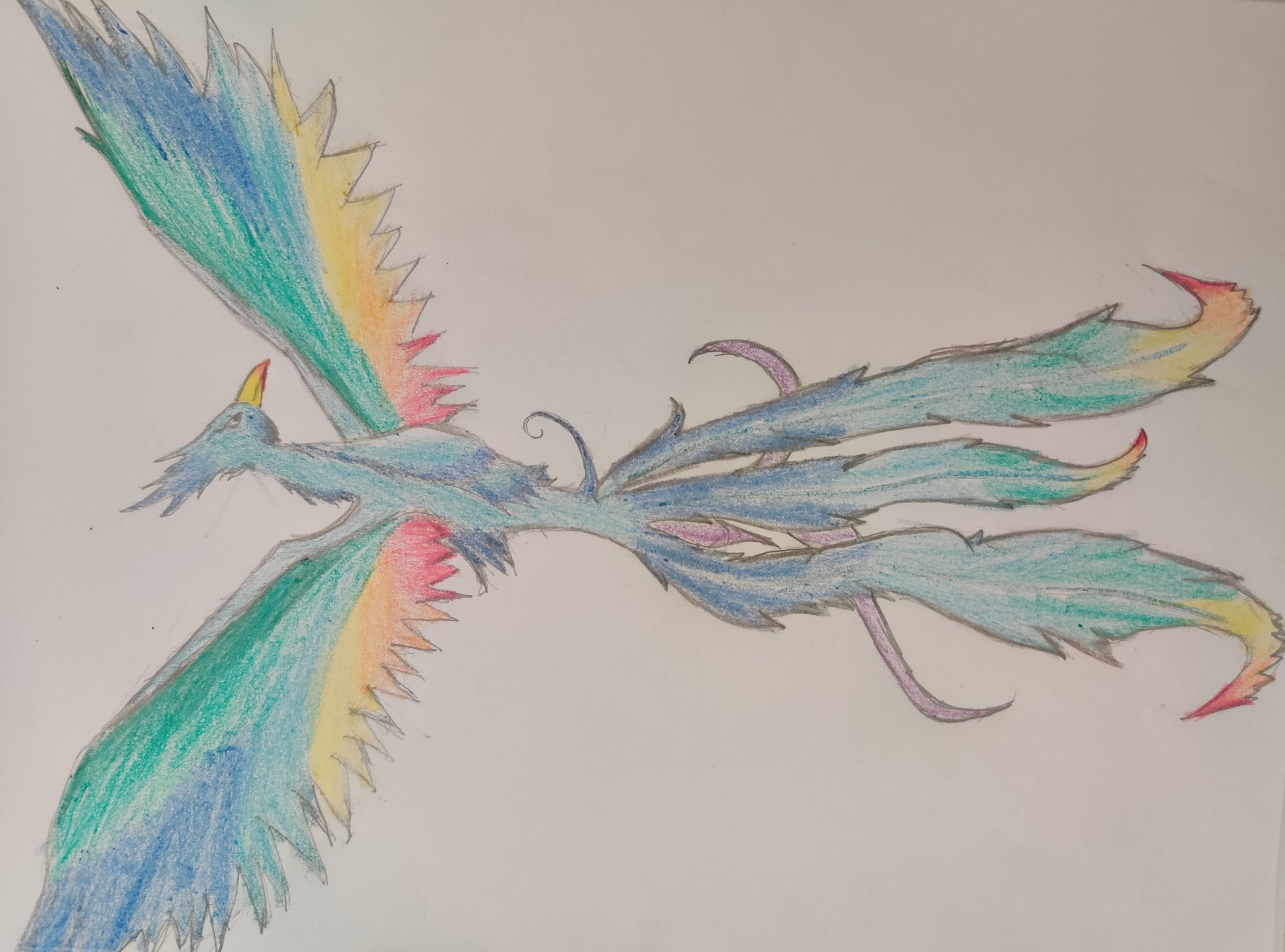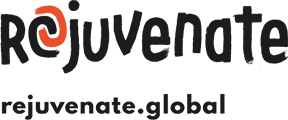post
On 19th July 2020 activist Rehana Fathima uploaded a video on social media showing her son (14) and daughter (8) painting a phoenix on her naked upper body. The video advocated for reinterpreting and desexualising female bodies. Fathima is currently facing investigation for child sexual abuse. In this case, whose rights are protected by the child rights framework?
Contextualising Fathima’s Politics:
In the description of her video ‘Body and Politics’, submitted to Kerala High Court, Fathima wrote:
“In a moral fascist society that looks towards the female body as mere illusions. Exposing the views which the society seek to conceal is also a political A[a]ct.”
Fathima’s claim that the activity would aid her children in interpreting the female body as a canvas for art instead of a sexualised object, met with public outrage and criminal prosecution for child sexual abuse.
Internationally, India is committed to protecting child rights. It has developed strong legal, policy, and institutional frameworks for child protection, providing children with resources, and facilitating participation through child-friendly processes. Further, Fathima’s political activism was based in Kerala, one of the more ‘progressive’ states in India. Kerala’s impressive performance on development and human rights indicators hides the deep-rooted brahmanical-patriarchal authority (systemic patriarchal authority interlinked with caste hierarchy) in the State. Thus, rights as a performance indicator does not necessarily translate to freedom for social groups who experience discrimination. In Fathima’s story child rights is instead “weaponised” to limit progressive gender politics.
‘All the Kings Horses and All the King’s Men’ lined up to protect the rights of Fathima’s children
Fathima argues, “No child who has grown up seeing his mother’s nakedness and body can abuse another female body.”
However, social media, followed by state actors and media outlets were – as stated by a Supreme Court Judge, “baffled”– by the challenge posed to social norms of gender and motherhood. These actors used their role (legally mandated and in some cases self-appointed) as guardians of child rights to protect Fathima’s children from their “inappropriate mother”. Below is a timeline of speech and actions by state actors.

Image: Timeline of Events; Concept: Philip 2021; Design: Radhika Ganesh
*DGP – Director General of Police; NCPCR- National Commission for Protection of Child Rights; HC – High Court (upper court in a State)
This barrage of responses was justified using arguments glorifying conventional motherhood and framing children as passive victims, for example,
- High Court of Kerala: “…children are not born with a moral compass and it is the job of parents, especially of the mother, to build that compass for them… Deep love for her children, sacrifice and dedication, protection and security etc. are the qualities of a mother… It is usually said that, the mother will be the window of the child to the world.”
- Opinion piece (newspaper): “… [In this case] children are used as tools to express an adult’s philosophy about sexuality and gender respect. At this tender age children cannot understand sexuality…”
In my analysis of 40 reports published in 5 newspapers with the most circulation, 70% of the titles referred to speech and actions of censure against Fathima for child sexual abuse. Only 15.44% of the content referred to her advocacy on body politics. There was strong support for jail time for Fathima in the public comments section of these reports. My research further reveals that the responses facilitated “twisting and repurposing” (Lewin 2021) of Fathima’s political act as an attempt at sex education that amounted to child sexual abuse. Protecting Fathima’s children, framed as victims of sexual abuse with limited capacity to comprehend the political action, became the moral obligation of the backlash actors. Ironically, the children were fully clothed in the video, Fathima’s body is painted covering nudity, and none of the actions were sexual. This warrants the question:
Whose interests are protected by invoking child rights in Fathima’s case?
Similar to global challenges of negotiating protection and agency for children, implementation of child rights in India often uses adultist approaches. Over time revisions to child rights law and policy has made the implementation process more child friendly, but these continue to represent children as passive recipients.
Apart from performative actions reflecting ‘best interest of the child’ (mandated by UNCRC), child protection responders missed pressing child rights concerns. Notably,
- They do not discuss concerns about how consent of the children was obtained to participate in the video or, their right to participate in a political act;
- No action was taken against the inflammatory comments – some of them explicitly sexual – that the children faced as a response to the video;
- The police took into evidence the only computer in the house which the children were using for online classes due to COVID-19
Adopting a purely protectionist approach led to child rights being used as a convenient tool to maintain social norms surrounding gender and motherhood without addressing some of the central child rights concerns.
How can we ensure that child rights serve children in India?
While child rights framework in India aims to protect, provide, and aid child participation, in reality children are dependent on adults to access their rights. As in the case of Fathima’s children, when children have limited space and agency to operationalise their rights, their rights run the risk of being subjected to adultist interpretations which often serve the interests of more powerful actors. A contextually relevant and intersectionally sensitive process, co-created and implemented with children and young people to revise how child rights are implemented is needed.
The 3S – Space, Support and System Change identified in the Rejuvenate Working Paper is a strong place to start. India requires spaces that allow children to network with their peers and form advocacy groups; support for children to not only receive but actively use their rights in the form of community and institutional process; and finally, change systems to include and engage with children at every step, including in revising implementation of child protection mechanisms.
In the case of Fathima’s children we are left with unanswered questions – did they willingly join their mother’s campaign on body politics? Were they aware that they might face backlash online? Are they willing recipients of the protection the State and society is offering them? Policy and practice of children’s rights in India and many countries around the world precludes space or opportunity for the child’s agency. It withholds from children their opportunity to revise and reconstruct political, social and moral norms that govern our socio-political institutions. Over the last decade, children have proven that they can think for themselves and their communities. The child rights movement and development initiatives in India should strongly adopt the practice – “nothing about us without us” and develop new forms of implementation of child rights that incorporates the 3S framework.






